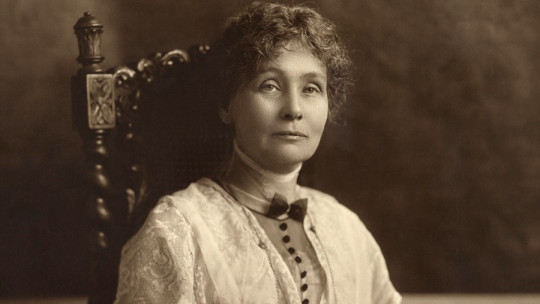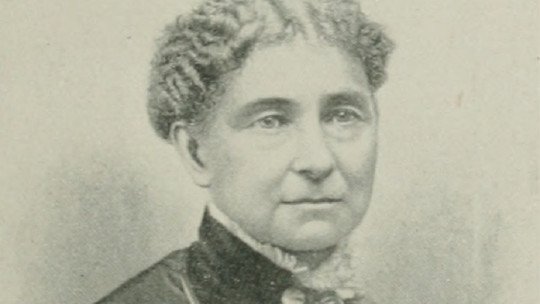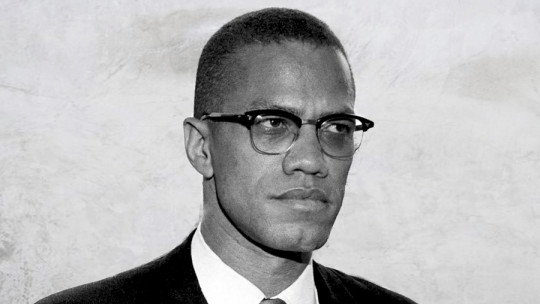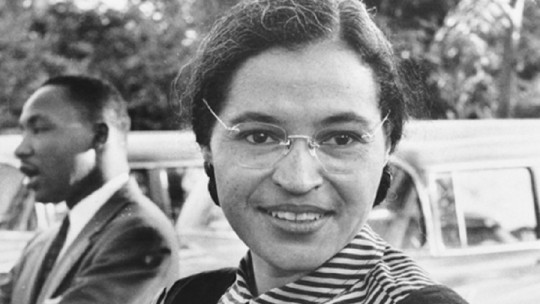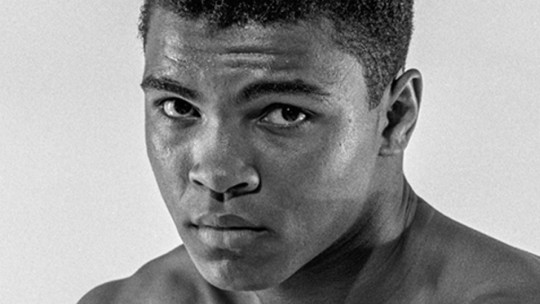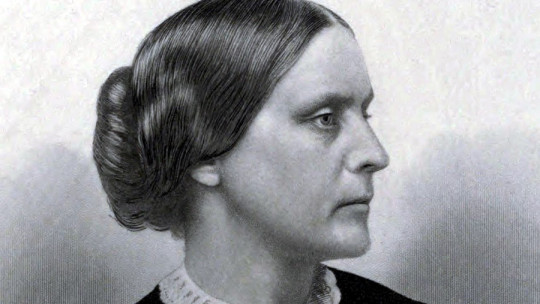
The history of women’s suffrage is extensive and demanding. There are many women who have done everything possible to achieve equality between men and women, fighting against a world in which they were infantilized and denied the same conditions that men enjoyed.
The United States of the 19th century was an ironic country. After the Civil War and the Confederate defeat, rights were recognized for African Americans, who until recently were slaves in the South, but women, whether white or freed black, barely had recognized rights.
The suffrage movement was in full swing and the figure of Susan B. Anthony emerged in the American context, a pioneer in the United States in the defense of equality between men and women. Let’s discover the life of this feminist activist through a biography of Susan B. Anthony in which we will see his career.
Brief Biography of Susan B. Anthony
Susan Brownell Anthony was born on February 15, 1820 in Adams, Massachusetts She grew up in a liberal Quaker family and was the second of Daniel and Lucy Anthony’s seven children.
The Anthony couple did not allow their children to play with toys and they tried to make their children, from an early age, find the “inner light” that the Quaker religion would reveal to them. Thanks to her father being concerned about the education of her children, young Susan learned to read and write at just three years old.
His father was a Quaker professor who at that time ran a cotton manufacturing company, openly opposed to slavery. Susan She was raised in an environment in which independence of judgment and ethical rigor were promoted but strict upbringing was also applied.
Youth and training
In 1826, when Susan B. Anthony was only six years old, she and her family moved to Battenville, New York, where she attended the local elementary school. In addition to attending class, the young woman helped her father in a cotton factory. The Anthony couple treated her seven children equally, regardless of gender, which planted the idea of gender equality in Susan’s mind.
The Anthonys’ ideas were truly advanced for their time, which got Susan into trouble at school since her teacher refused to teach her various contents because he considered them inappropriate for girls.
This did not please Susan’s father, who was a firm defender of both genders receiving the best possible education, something that motivated him to found his own school and teach his children there. There he would hire Mary Perkins, a teacher who would be a role model for the young Susan B. Anthony.
Susan B. Anthony would complete pedagogy-oriented studies at a girls’ boarding school in Philadelphia and would also attend a school for girls in central New York state. After completing these studies, he would dedicate himself to teaching until he was thirty years old at which time his political activism would begin.
Beginnings in feminist activism
After her formative years, Susan B. Anthony began to enter the world of political activism, guided by the example that her parents had given her and a liberal spirit. In 1848 he joined the anti-alcoholic movement also called the pro-temperance movement, in which he was active for five years.
While in their ranks, she discovered the profound limitations that being a woman entailed in the society in which she had lived, even within a liberal reformist organization, and that is why she decided to found a group exclusively for women: the Women’s Temperance Society of the New York State.
But The event that would lead her to delve fully into feminism occurred in 1851, the year in which she met Elizabeth Cady Stanton, an already renowned feminist who in 1848 had led the Seneca Falls Convention, the first American suffrage manifesto. Stanton would become Anthony’s inseparable companion over time, and both would be feminist references for the next five decades.
Starting in 1882, Susan B. Anthony, along with Stanton and Amelia Bloomer, participated and organized various campaigns in favor of equality and women’s rights. The feminist struggle initially focused on general demands but, progressively, it focused on achieving universal suffrage. The idea was that by gaining the right to vote the feminist movement could initiate various legal reforms from within.
The campaigns in favor of women’s suffrage were also accompanied by protests in favor of changing the labor legislation of that time, raise awareness of the prevailing sexist mentality and denounce the discriminatory customs of North American society. Among her most famous campaigns is her fight against the physical restrictions imposed by 19th century women’s fashion, promoting its replacement with the use of more comfortable clothing, such as bloomers and full skirts.
War of Succession and postwar
Since 1854 Susan B. Anthony She combined her feminist struggle with the fight against slavery within the American Anti-Slavery Society until the Civil War began in 1861. At that time the feminist struggle was practically removed from all political life, since the situation and military efforts were concentrated on the anti-slavery cause. In 1863, Anthony founded the Loyalist Women’s League, an organization that promoted the liberation of slaves in Confederate lands.
After the war ended, Anthony spoke out publicly against the violence against African Americans, encouraging the suffrage movement to support them. Furthermore, along with Stanton, He led various campaigns against New York laws that discriminated against women holding numerous conferences throughout the state.
Some time after the war had ended, suffragism, which had been supportive of the abolitionist cause, understood that the time had come to focus exclusively on its main objective, achieving gender equality and the vote. The reason for this was that, despite being anti-slavery, this support had not been reciprocal. Anti-slavery men did not support or approve of female political activism.
This is where we can talk about a paradoxical United States. This nation, which called itself a country of the free, until recently had not been so for blacks and Native Americans. It had just recognized the rights of these two racial groups, but women, whether white or black, had the same status as citizens below men.
In 1868 the Anthony-Stanton tandem She began publishing a feminist weekly in New York City. “The Revolution” In this publication Anthony focused on demanding equal pay between genders and the improvement of working conditions for New York workers. At that time, men were paid on average five times more than women for doing the same job. This is why she decided to found the New York Working Women’s Association.
In 1869 she founded the National Women’s Suffrage Association with Stanton, which began to demand the approval of a constitutional amendment that would give women the vote once and for all. His motivation was because African American men had just been granted civil and political rights thanks to the approval of two constitutional amendments, specifically numbers 14 and 15, and this is where Anthony’s greatest life episode begins.
Judged for voting
In 1872, presidential elections were held in the United States. At that time women did not yet have the right to vote but, despite this, Anthony, along with 49 other women, They were presented on October 1 at the Rochester civil registry There they asked to be registered as voters under the impressed gaze of the registration moderators.
Anthony defended her right to be registered as a voter by appealing to the recently approved 14th and 15th amendments. The annex to these new laws declared that all those born in the United States were citizens of the country and had certain rights. According to Anthony’s arguments, there was no reason to exclude women from such rights, which should include being able to vote in elections.
At first the moderators refused to record them, something that did not make Anthony give up. He cited great men of the American Constitution and attempted to persuade the registrars. Seeing that they would not let her, he threatened to sue them, saying that they were not respecting the new laws. The supervisors couldn’t help but agree and agreed to search a total of fifteen women, including Anthony.
Thus, on October 5, the day on which the elections were held, Anthony went to the polls in Rochester to vote along with eight women, exercising the right to vote that they had demanded so much no problem. Anthony voted for Republican candidate Ulysses S. Grant, since his party had promised to listen to the demands of feminists.
But the story didn’t stop there. The fact that women had been able to vote generated controversy On November 14, an arrest warrant was issued for Susan B. Anthony on a charge of illegal voting, prompting the Deputy Marshal of Rochester to come to her home and politely ask her to go to the police herself. . Anthony refused, saying that she wanted to be treated the same as a man when she commits a crime, holding out her wrist so they could put the handcuffs on her right there.
Preliminary investigations began on November 29, with Anthony and 14 other women accused. There was a break of almost a month after questioning the parties involved and, in December, The director of investigations concluded that Anthony had probably violated the law taking the case to court.
The first trial was scheduled for January and the defendants were released on bail, except for Anthony. She was the only one who refused to pay, since she saw in her arrest a unique opportunity to reach the Supreme Court and make her demands known throughout the country. Thus, she remained incarcerated until January when her lawyer, against her will, decided to post bail. On January 29, the jury found Anthony guilty of illegal voting, and a second trial was scheduled for May.
Already free on bail and awaiting the second trial, Anthony toured Rochester and its surroundings to promote women’s suffrage The trial was postponed and scheduled for June. The end result was that Anthony had to pay $100, something she refused again and, this time, the judge did not dare to demand payment or lock her up, knowing that Susan B. Anthony would see it as an opportunity to submit to a new trial, stretch the process further and have greater repercussions.
Last years
In 1883 Susan B. Anthony traveled through Europe establishing contact with different feminist organizations in England and France. It was on these trips that the idea of creating an international suffrage organization arose, something that five years later would become a reality during the events commemorating the anniversary of the Seneca Falls Declaration. The International Council of Women was born, in which feminist groups from 48 countries would join together
Along with the work carried out by Stanton and Mathilda J. Gage, Susan B. Anthony compiled and published her “History of Woman Suffrage” between 1881 and 1902. In addition, together with a group of Christian suffragettes, she worked on the edition of the “ Women’s Bible”, a work that was certainly controversial. It was a compilation of biblical passages in which women appeared and commented on them.
In his last years he had the opportunity to go to England in 1902. It was during her stay in Manchester that she had the opportunity to meet the English suffragette Christabel Pankhurst, daughter of the suffragist Emmeline Pankhurst. Anthony motivated Christabel to step up her fight for women’s rights.
In February 1906 she gave a presentation at the Baltimore Women’s Conference and was expected to attend a party in her honor in New York. However, while on the way, she contracted pneumonia and, although she recovered momentarily, she became ill again.
Susan Anthony died in Rochester, New York, on March 13, 1906, being 86 years old. Despite her great fight for women’s rights and the approval of women’s suffrage, she could not see this milestone during her lifetime in her native United States, but, without a doubt, her fight helped make it possible. approve in 1920.


